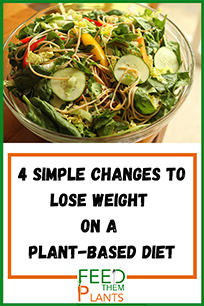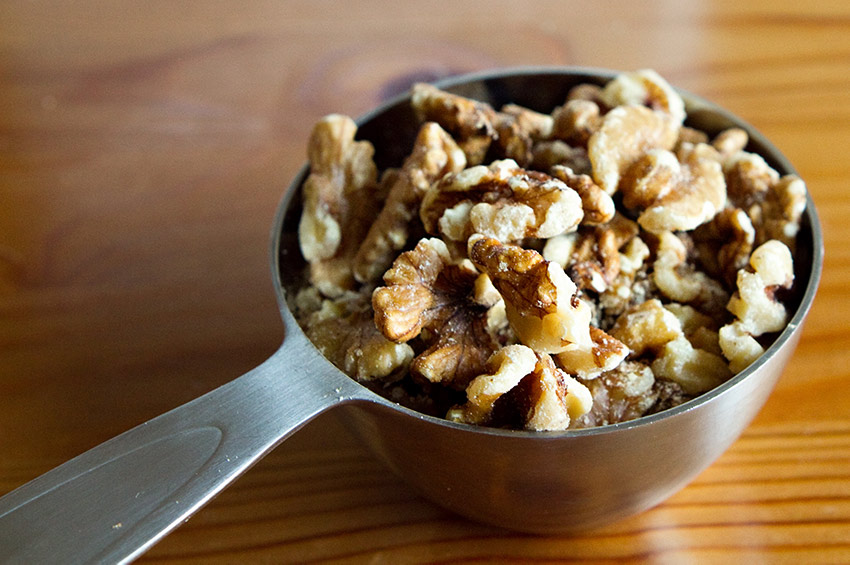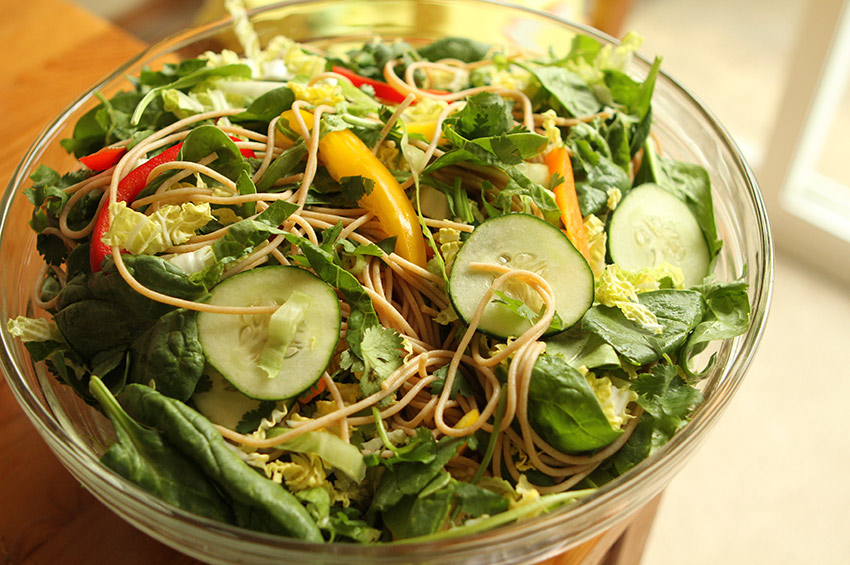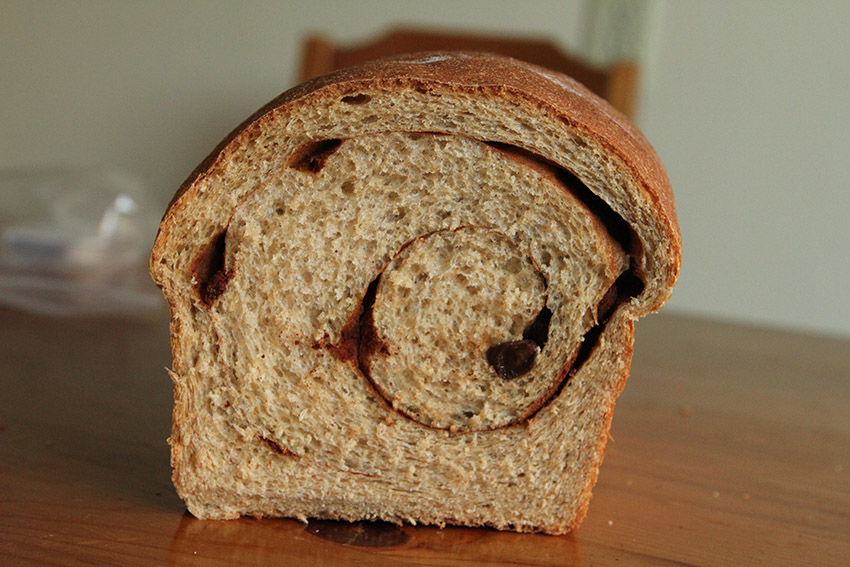
While many people experience immediate and ongoing weight loss on a plant-based diet and love that they can eat a high volume of food and stay a healthy weight, there are others who plateau before reaching a healthy weight.
Of course “eat fewer calories” is one approach, but counting calories and obsessing about portion sizes is not very sustainable. Plus, many people come to a plant-based diet wanting to be able to eat until they’re full and relax about portion size.
Here are four things you might adjust if you find yourself eating plants but not losing weight. The good news is that once you reach a healthy weight, you can add back in some of those things you’ve been skipping.
1. Don’t eat so many nuts.
Nuts, along with avocados and seeds have the highest caloric density of any plants. It’s very easy to overdo it on nuts because they are delicious, easy to snack on, nice to spread on bread in their butter form, and they’re a common star of many rich and creamy plant-based dishes. All that adds up to a lot of calories!
If you’re in the process of losing weight, limit yourself to just a handful or a quarter cup of nuts a day (and go easy of the avocado while you’re at it).

2. Fill half your plate (or bowl) with non-starchy vegetables.
On the other side of the caloric coin are the unsung heroes of the plant-based diet. Non-starchy vegetables are low in calories, high in bulk to fill your stomach, and they’re high in nutrition.
Dr. McDougall recommends in his fantastic book, The Starch Solution (aff.), that if you are wanting to lose weight, you should fill every plate of food you eat half with non-starchy vegetables. Think broccoli, steamed chard, cucumbers, peppers, spinach, or snap peas, as opposed to beans, rice, pasta and potatoes.
If you go back for seconds (and you should! Fill up at mealtimes!), make sure to fill each plate half full with those non-starchy vegetables. If you don’t like many yet, give yourself a chance. Remember that tastes change, and this is just while you’re actively trying to lose weight.

3. Watch your (even whole grain) flour intake
Even if you are eating a whole food, plant-based diet, it’s possible to overdo it on baked goods. Whereas whole grain pasta acquires a lot of water in cooking and tends to fill your stomach without so many calories, breads don’t have that effect. If weight is still an issue for you, try to build meals around intact grains like oats, rice, and quinoa, rather than processed grains like those found in pancakes and toast.

Here’s a helpful (and highly entertaining) guide on navigating the bread aisle at your grocery store:
4. Put a time-limit on your eating.
Our late-night snacking is rarely the healthiest, and restricting your eating window is an effective way to reduce your overall caloric intake without going hungry since your body will adjust to it fairly quickly if you’re consistent. Time-restricted eating appears to have benefits outside of weight loss as well. Even just cleaning your kitchen (and your teeth!) at 7pm and eating breakfast at 8am gives your body enough time to reap the benefits.
Further Resources
- Along with The Starch Solution mentioned previously, the book How Not to Diet has solid science-driven help for weight loss on a plant-based diet.
- Dr. Greger, the author of How Not to Diet, has a free app called The Daily Dozen that makes it easy to track and daily check-off the recommendations he makes for optimal health and healthy weight.
- Don’t jump to a different “diet” for a quick fix. Stay the course. Here’s an excellent video addressing how keto and plant-based diets compare for weight loss and overall health:
- Finally, I can recommend Plantiful Kiki’s content on YouTube. She has chronicled her weight loss following The Starch Solution, and I’m inspired by her simple but lovely everyday meals.

Love it. Those nuts! I can graze on them all day and then notice the scale inching up.
Also: chocolate!